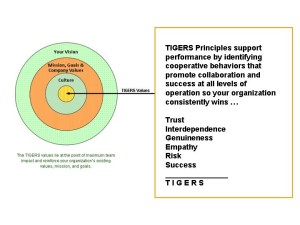You have interviewed all the candidates and have hired the best person for the position. The new team member is now at work for the first day, ready to go. Now what? What team building activities can you deploy to improve employee onboarding?
To get the most from all employees, leaders who invest in employee onboarding and training to give the employees the tools they need to succeed drive better department and division results. New team members may have great credentials and a successful track record. The reality is that every organization is different so new employees must learn the ropes of their new organization to succeed.
Leaders, however, are busy. Training often gets overlooked when deadlines loom. While other work may feel more important than new team member training, leaders who focus on implementing team building activities and strategies to improve their employee onboarding processes reap rewards.
 Here’s How To Get Those New Employees On Board.
Here’s How To Get Those New Employees On Board.
Personalize it. Having an employee onboarding process in place is an extremely important step for employee success. It’s not enough, however, to have a one size fits all strategy. Some new-hire materials will be the same across the board for all employees. Other materials will be different. For example, new sales team members will likely need different training materials than HR team members. The bottom line is that new hires need streamlined information whether the company has four employees or 400 or 4,000. Giving new hires the personalized tools they need to get started will keep employees focused, and it will save money in the long run.
Get on the same page. For an onboarding process to be successful, all parties need to be on the same page. Managers, their leaders and HR team members must have a clear understanding of the goals of the onboarding process including the existing procedures that are in place. Coherent management involvement holds leaders accountable and opens doorways to track the effectiveness of the current onboarding processes. Leaders must buy-in to the importance of onboarding and communicate with one another before, during and after an employee is hired, trained and coached.
Continue training. The initial onboarding process is important, but training should not stop there. Once job-specific training is accomplished, team process training is required to ensure the team runs smoothly. Effective team process training includes decision-making and problem solving competency, accountability, behavior management, conflict management and communication. Then in developing a pool of potential new team leaders, goal setting, motivation, role assessment, meeting management, measurement and team facilitation skills are required. Unfortunately, many organizations promote their best employees to management roles without training. This plan consistently backfires when poorly trained managers are the root cause of high employee turnover.
Promote lifelong learning. Training that is not practiced isn’t learned. This means that training transference is a process onto itself. Successful leaders understand the importance of pushing themselves, learning from their past experiences and making changes to processes that aren’t working. One way that leaders can invest in lifelong learning is by enrolling in training that offers year long access and not a one-time shot. One-time shot training usually does not transfer to improved skills and attitudes. An example of a year-long alternative is the 6 Principles That Build High Performance Teams Leadership Training program. The program coaches leaders in how to improve employee accountability and engagement through behavior management anchored by trust, interdependence, genuineness, empathy, risk resolution and success. These principles are essential for an organization’s success. Even though an established onboarding process may be in place, it is worthwhile for leaders to learn new skills that keep their workplace environment positive, cooperative and successful.
When overlooked, the lack of good employee onboarding sets the tone for employee engagement, productivity and job satisfaction by default. A good onborading process includes personalized training; leaders who are on the same page; ongoing training after the onboarding process is complete; and investing in and promoting lifelong learning.
Other Articles We Recommend
- Personalize Onboarding to Jumpstart a New Hire’s Performance
- The Sad Story of Onboarding Gone Wrong
- How To Train Your Employees To Become Managers
- Invest In Your Leadership Abilities By Becoming A Lifelong Learner
Copyright TIGERS Success Series, Inc. by Dianne Crampton
 About TIGERS Success Series, Inc.
About TIGERS Success Series, Inc.
TIGERS Success Series is a Bend, Oregon Team Development Consultant that helps leaders build cooperation among employees and collaboration between departments for improved revenue results. We do this by deploying our proprietary TIGERS team process that improves trust, interdependence, genuineness, empathy, risk resolution and success in the workplace. We have been doing this for over two decades providing diagnostics and customized team interventions for committed leaders and their teams. We also license and train other professionals in the use of our award winning resources. For more information, call 541-385-7465.


